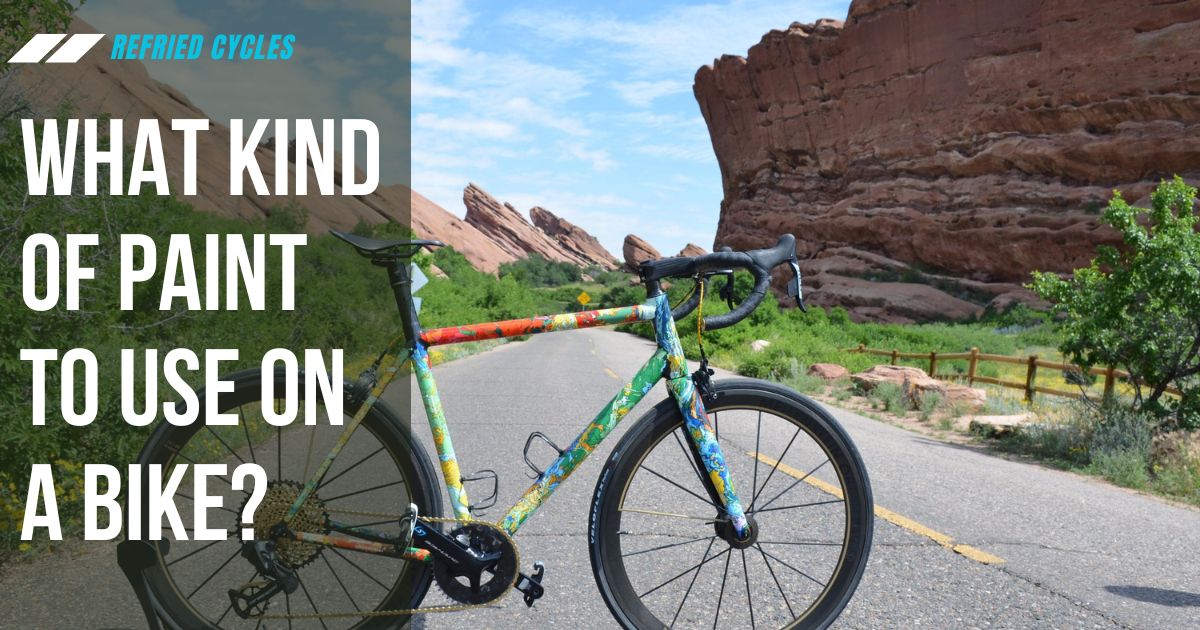When it comes to giving your bike a fresh, personalized look, choosing the right kind of paint is super important. Not only does it affect the appearance, but it also plays a significant role in the longevity and durability of the finish. In this comprehensive guide, we will delve deep into the world of bike paints, helping you select the best option for your two-wheeled companion. Whether you’re a professional cyclist, a hobbyist, or someone looking to revamp an old bike, understanding the nuances of bike painting is key. So, let’s embark on this colorful journey and explore the “kind of paint to use on a bike.”
What Kind of Paint to Use on a Bike?
Choosing the right paint for your bike is super important for both aesthetics and durability. The best type of paint largely depends on the material of your bike’s frame, your budget, and the finish you desire. Here’s an updated overview of the options available:
Epoxy Paint
Epoxy paint is an excellent choice for metal bike frames due to its exceptional durability and scratch resistance. This two-part paint is a bit more complex to apply, as it involves mixing a resin and a hardener, but the result is a hard, protective finish. It can be applied with a brush, roller, or spray gun, making it versatile for different application preferences.
Acrylic Enamel
For those looking for a simpler application process, acrylic enamel is a viable option. It’s a single-part paint, easier to handle than epoxy, and works well on a variety of frame materials, including wood and plastic. While not as robust as epoxy paint, it still offers a decent level of durability and is available in a wide range of colors.
Powder Coating
Powder coating remains the premium choice for the highest level of durability. This method involves applying a dry powder to the frame and then curing it in a special oven. The result is a tough, chip-resistant finish that is ideal for bikes that endure rough conditions. However, powder coating requires specialized equipment and is generally the most expensive option.
Spray Paint
For a quick and budget-friendly approach, spray paint is a popular choice. It’s the easiest and fastest way to give your bike a new look. However, it’s important to select a spray paint specifically designed for bikes to ensure better adherence and durability. While not as long-lasting as other methods, it’s a great option for temporary color changes or for those who frequently like to switch up their bike’s appearance.
Each of these painting methods offers different benefits and suits various needs. Your choice should align with how you use your bike, the level of wear and tear it experiences, and your personal aesthetic preferences. Whether you opt for the durability of epoxy or powder coating, the ease of acrylic enamel, or the convenience of spray paint, there’s a solution that will breathe new life into your bike while protecting it for years to come.
Choosing the Right Paint for Your Needs
Selecting the ideal paint for your bike involves considering various factors to ensure that you end up with a finish that is not only visually appealing but also functional and durable. Here’s a guide to help you navigate through these considerations and choose the best paint for your biking needs:
- Understand Your Bike Type: The type of bike you own plays a super important role in the paint selection process. Road bikes, known for their light frames and speed, benefit from lighter, flexible paints like acrylic or enamel. On the other hand, mountain bikes, which are exposed to more rugged conditions, require resilient paints such as epoxy or urethane for added durability.
- Assess Your Skill Level: Your experience with painting and DIY projects should influence your choice. For beginners, user-friendly options like enamel or acrylic paints are advisable. They are easier to apply and require less preparation. More advanced DIYers or professionals might opt for epoxy or powder coating, which, while offering superior durability, require more skill and specific equipment to apply correctly.
- Factor in Your Budget: Your budget is a significant determinant in the kind of paint you choose. Enamel and acrylic paints are generally more affordable and easily accessible. In contrast, options like powder coating and two-component urethane are on the higher end of the price spectrum, mainly due to the need for specialized equipment and materials.
- Decide on the Desired Finish: What finish are you aiming for? Glossy, matte, or textured? Different types of paint offer various finishes. Acrylic and enamel paints can provide a range of finishes from matte to glossy. Epoxy paints typically result in a hard, high-gloss finish, while powder coating can offer a variety of textures and finishes, including matte, satin, and glossy.
- Consider the Environment: Where and how you use your bike is important. If you’re frequently riding in harsh weather conditions or exposing your bike to sunlight, look for UV-resistant paints. For bikes used in moist environments, consider rust-inhibiting options.
- Color and Aesthetics: Your color choice should reflect your personal style and the bike’s use. If visibility is a concern, especially for road bikes, opting for bright or reflective colors is advisable. For a more personalized touch, custom colors and designs can make your bike stand out.
- Maintenance and Upkeep: Consider how much time and effort you are willing to invest in maintaining the paint. Some paints may require more frequent touch-ups or special care to retain their appearance.
By taking into account these factors – bike type, skill level, budget, desired finish, environmental conditions, color preferences, and maintenance requirements – you can make a well-informed decision on the kind of paint to use on your bike. This thoughtful approach ensures that the paint you choose not only enhances the aesthetic appeal of your bike but also contributes to its longevity and performance.









